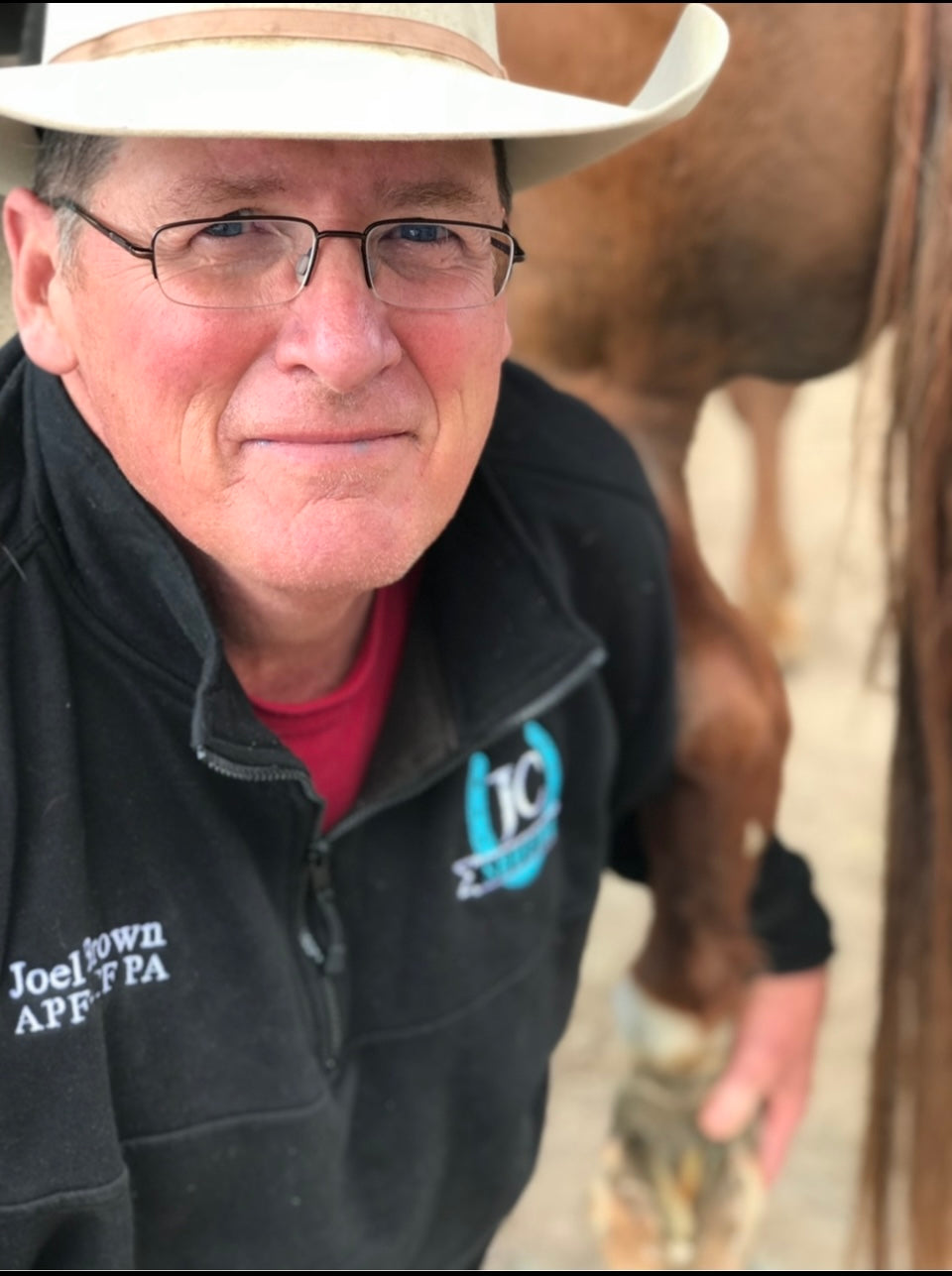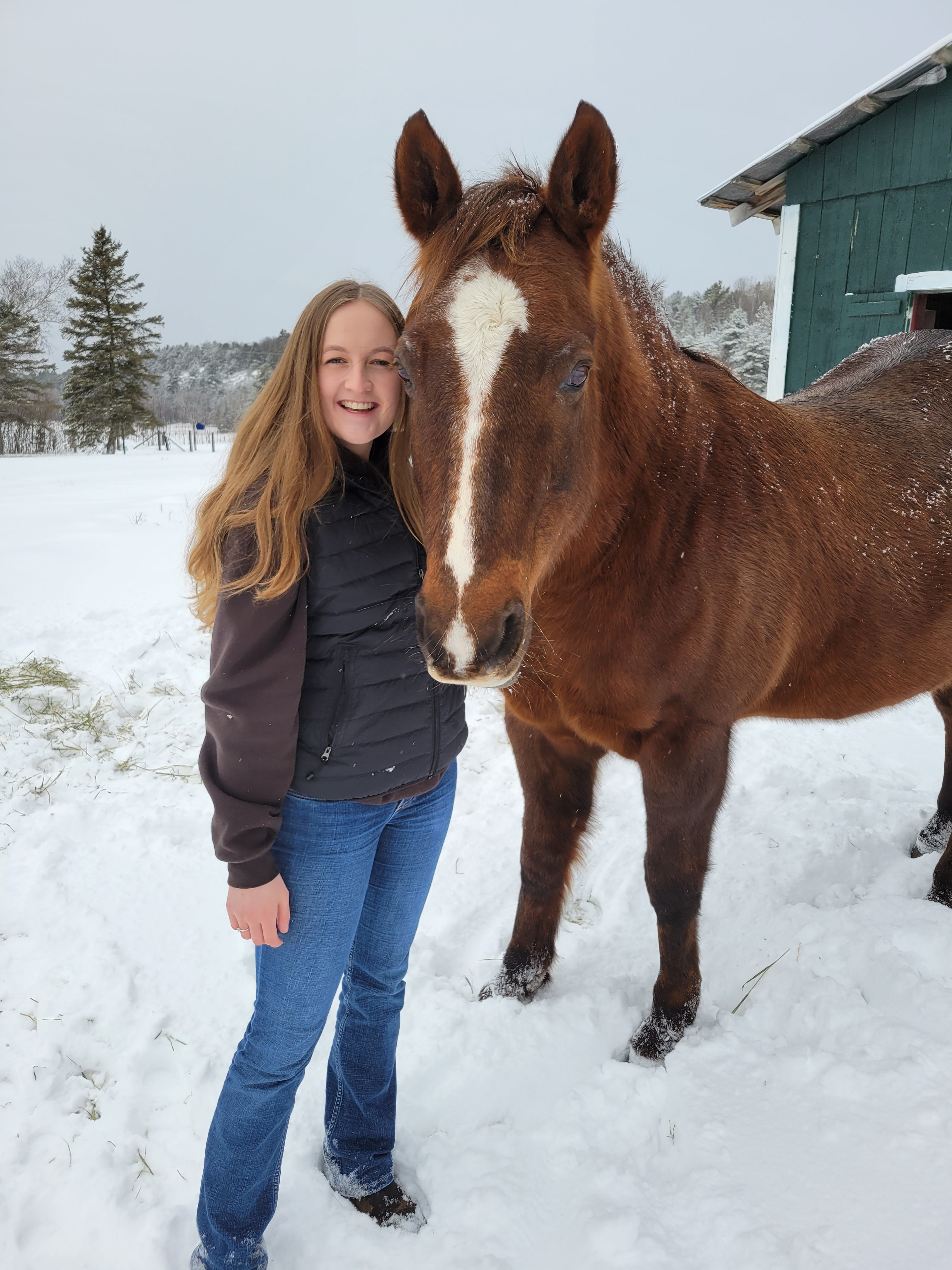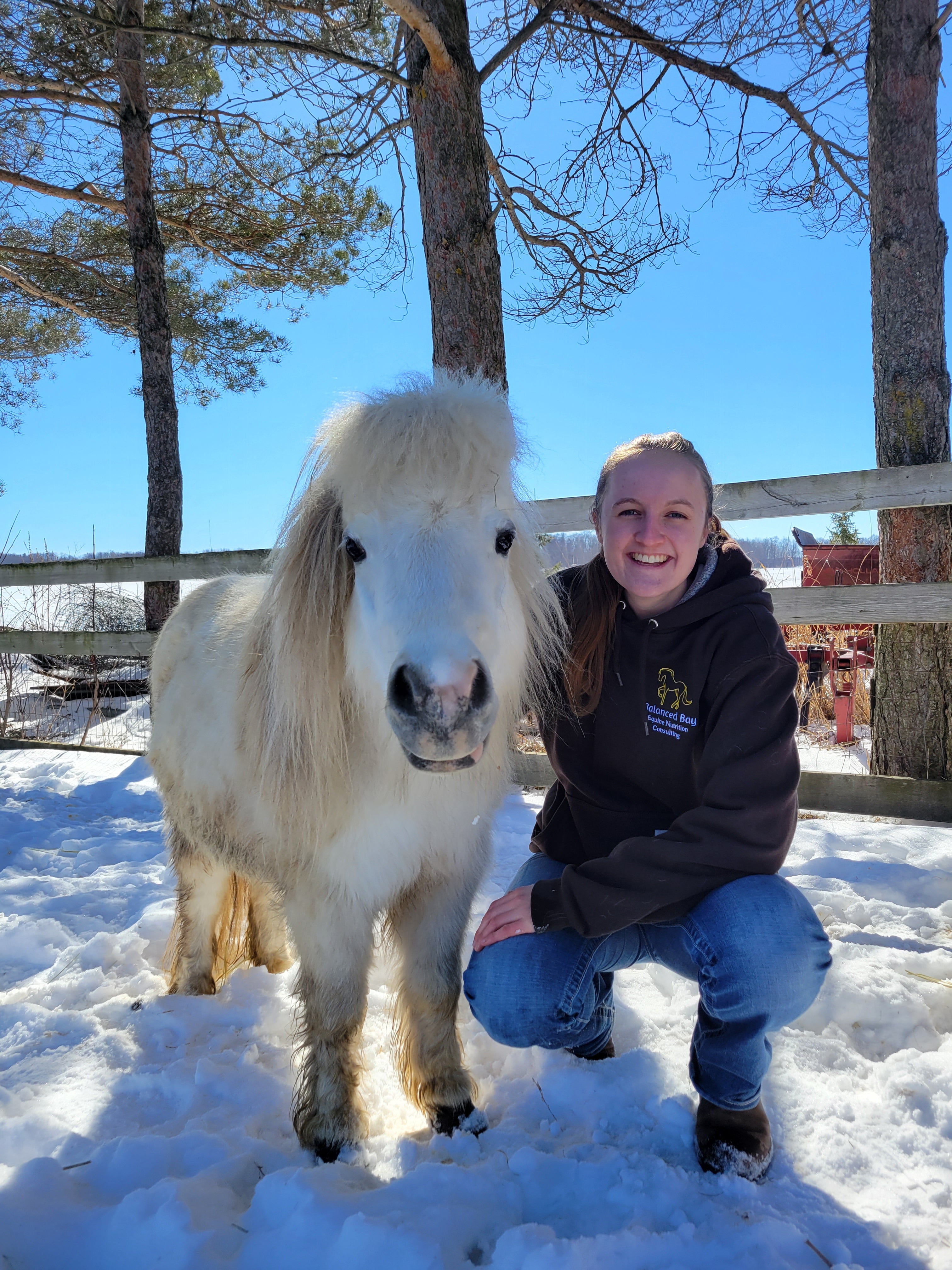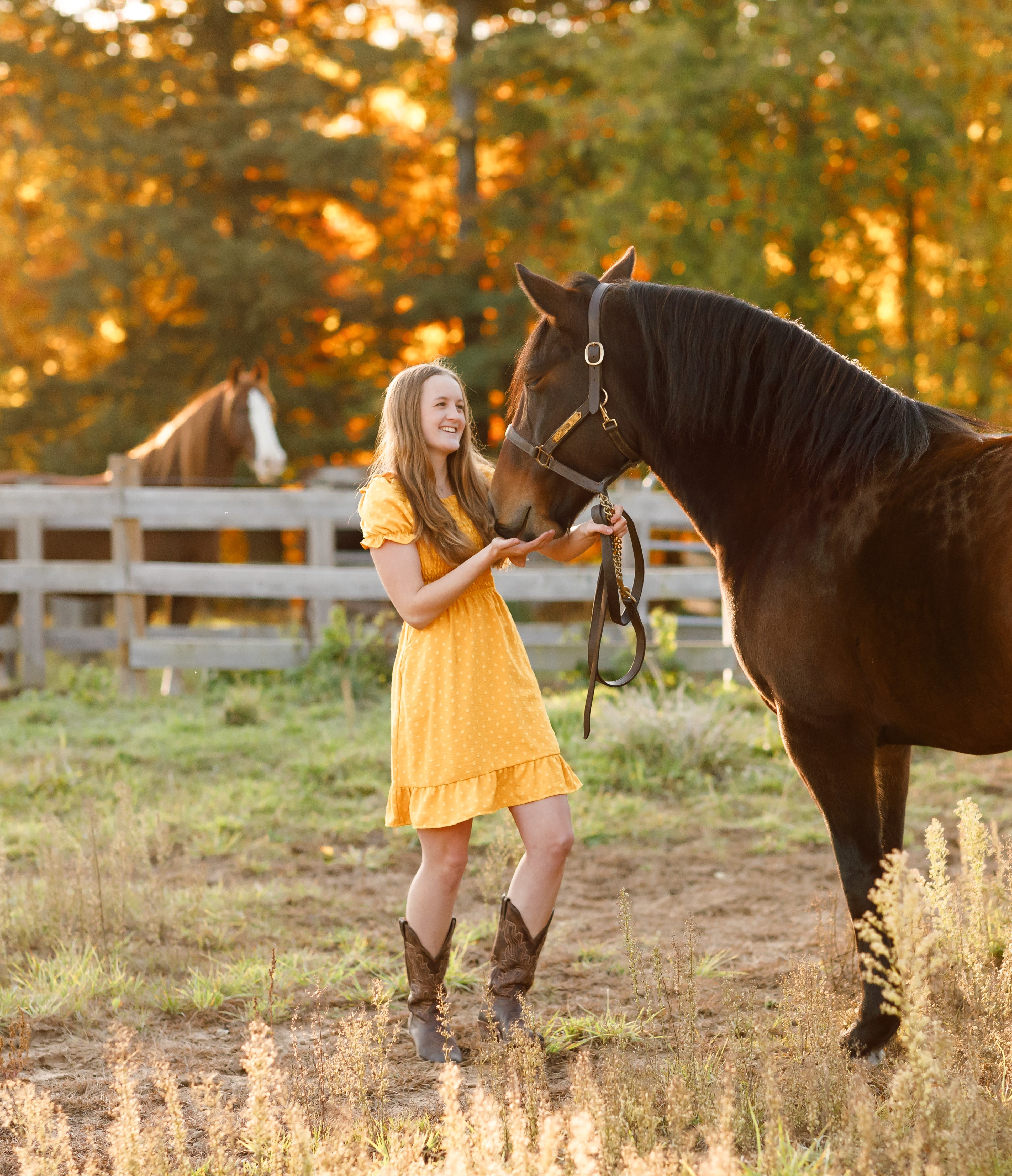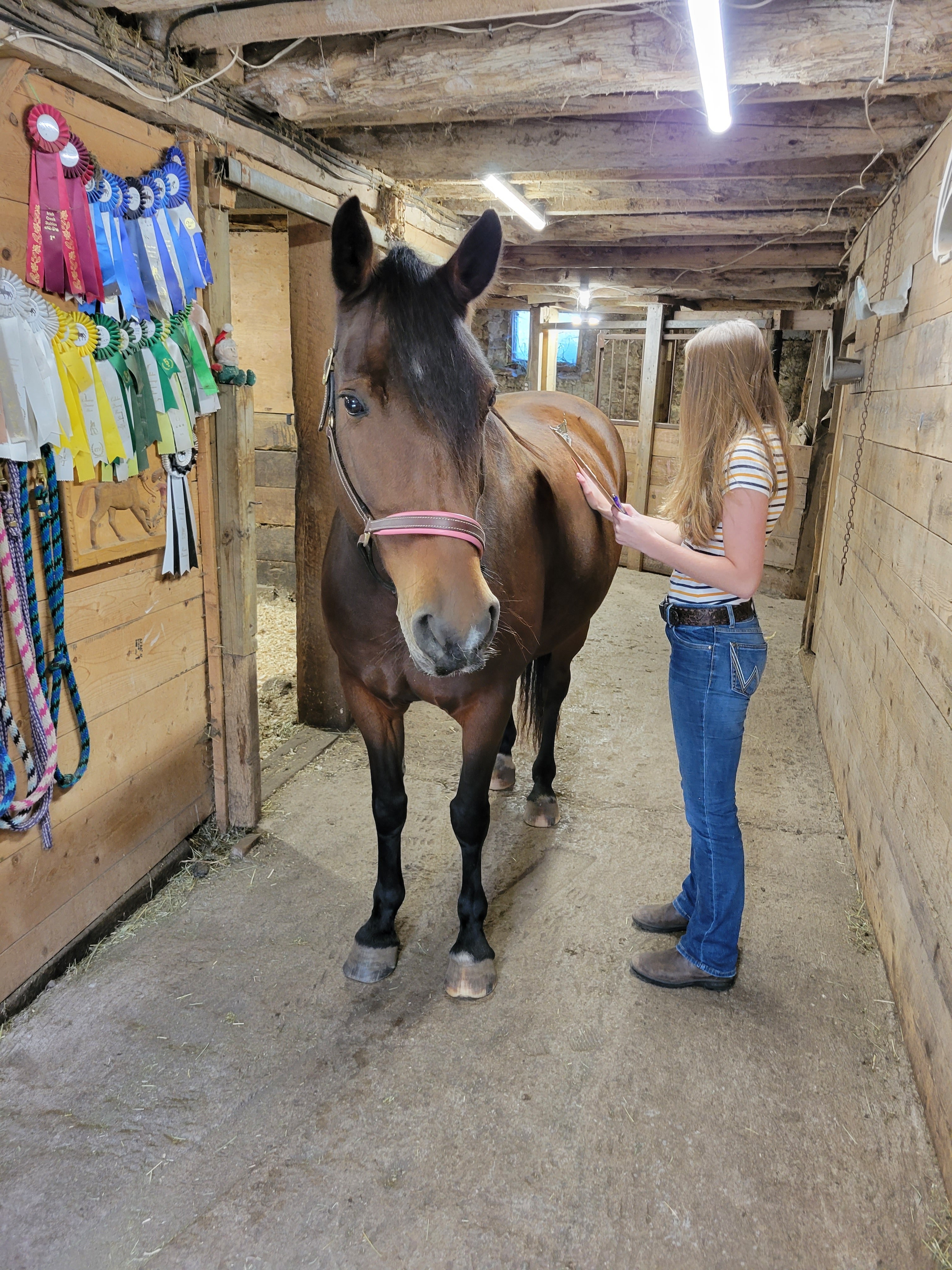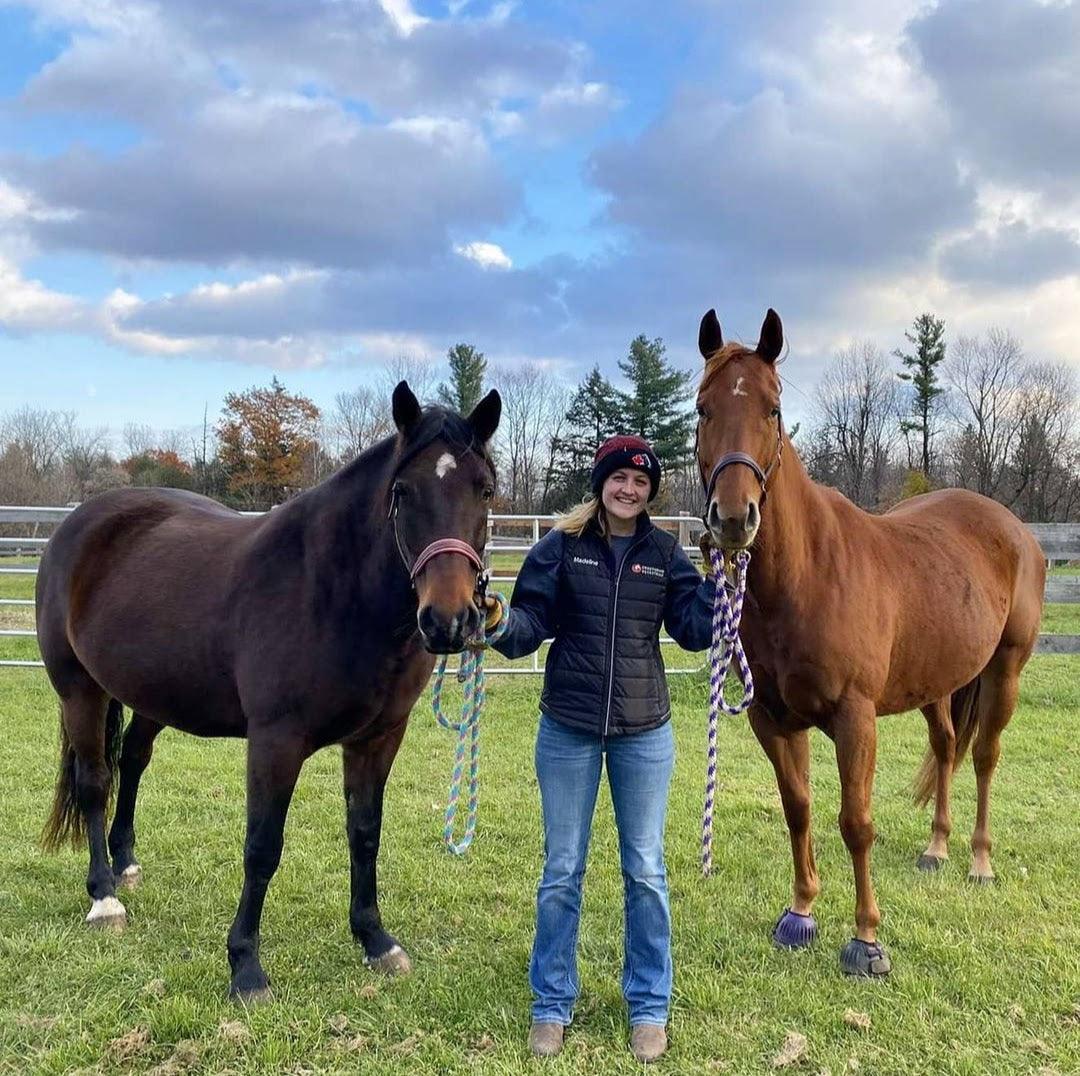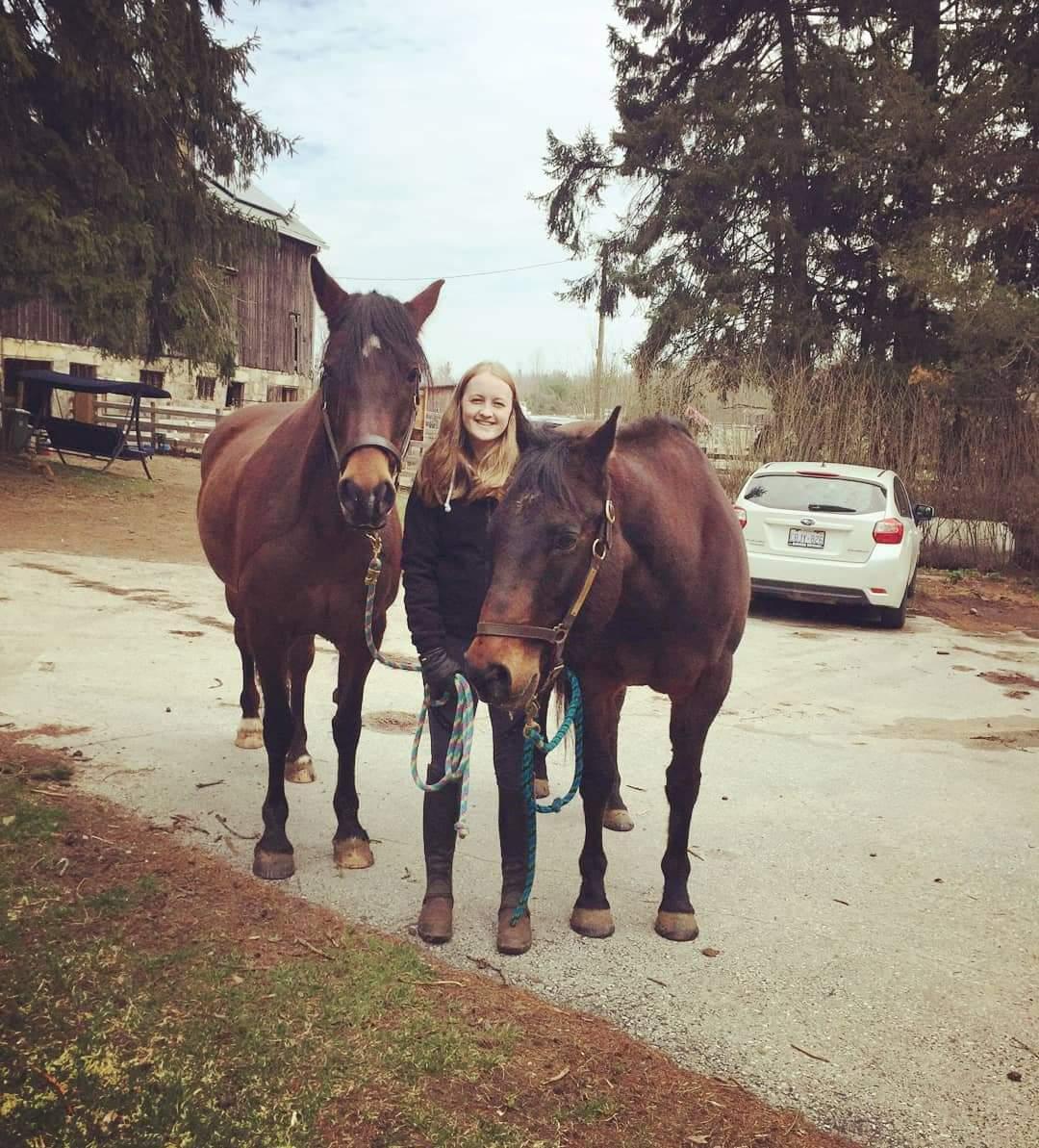
Selenium in the Equine Diet
By: Madeline Boast, MSc. Equine Nutrition
Trace minerals are often not at the forefront of a horse owner’s mind when it comes to selecting a feed – many times the crude protein and fat percentages are what people look for. However, trace minerals are essential and can significantly impact your horse’s well-being. When discussing nutrition and hoof health, ensuring the trace mineral requirements are met is crucial. This article will discuss selenium, the deficiency symptoms, the toxicity risk and how to optimally supplement your horse.
What is selenium?
Selenium is a trace mineral; this means that it is required in small doses. Selenium is essential for regular physiological functioning in the horse and has a few different roles in the body. The main roles are the control of cellular oxidative stress and thyroid hormone metabolism. For cellular oxidative stress control selenium is a required component of glutathione peroxidase which is an enzyme that plays a role in reducing the damage from free radicals. Selenium is also required for the function of iodothyronine 5-deiodinase which is an enzyme that plays a role in the regulation of thyroid hormones. Selenium is also found in select proteins in the body. These proteins are referred to as selenoproteins and are found in muscle tissue. Therefore, when selenium is not adequately provided in the diet, many physiological processes are negatively impacted.
Selenium Deficiency
In horses, selenium deficiency is commonly reported. Research estimates that the majority of horses in North America do not receive adequate levels of selenium from their forage. The soil levels of selenium directly relate to the selenium level of the forage grown in that soil. In most of Canada and the coastal regions of the United States, the soil is deficient in selenium, which results in the forage being deficient. Therefore, these horses will need supplemental selenium in the diet.
A study that investigated selenium deficiency in horses in PEI reported that aged and young pleasure horses had a high prevalence of inadequate concentrations of selenium. They found that 79% of the horses evaluated had either marginal or deficient serum selenium levels.
So, what happens when selenium is deficient in the equine diet?
The most common clinical symptoms of selenium deficiency are muscular disease, reduced immune response and a reduced ability to combat free radicals from oxidative stress. In addition to these symptoms, there are also negative impacts on hoof health. A lack of selenium in the diet can contribute to thin and cracking hoof walls.
Selenium Toxicity
The upper tolerable limit for selenium is much lower than it is for other trace minerals. Therefore, toxicity can become a serious issue. When supplementing the equine diet, more is not always better. Simply heading to the feed store and making your best guess on a supplement is not adequate in this situation.
The NRC, 2007 states that the upper safe limit for selenium supplementation in horses is estimated to be about 2 mg/kg dry matter per day. If a 500 kg horse is consuming about 10 kg of dry matter than this equates to 20 mg of selenium a day. Although a much smaller margin when compared to other trace minerals, the 20 mg is still significantly more than the recommended 1-1.25mg/day for a 500 kg horse.
Optimal Selenium Supplementation
Based on the information previously discussed in this article, we know that additional selenium is likely required over what the forage can provide, but over supplementing is also a concern. First and foremost, testing your hay will give you valuable information on the minerals that are lacking in your horse’s diet. The gold standard in equine nutrition is to base supplement decisions on the hay analysis as hay is often the main component of the horse’s diet.
So, if you know that your forage is lacking in selenium – how can you go about choosing an optimal supplement?
Well, the source of the selenium is important in the supplement as different sources have different levels of digestibility. Research has shown that organic sources of trace minerals are more digestible than inorganic sources. So, if you are looking at an ingredient list on a supplement, the popular inorganic sources used are sodium selenite and sodium selenate. The most common organic compound used is selenium yeast.
As mentioned above, the NRC states that 1-1.25 mg of selenium is required per day for a 500 kg horse. However, there has been recent research that showed that when organic selenium is supplemented at an increased level, there was a decrease in total plasma antioxidants. In this study, the level of selenium supplementation used was 0.3 and 0.4 mg Se/kg DM. If we convert this into what a 500 kg horse would consume that is about 3-4 mg of selenium per day. Research being able to show benefits to an increased level of supplementation is interesting, however, more research needs to be done on selenium supplementation to elucidate an ideal supplementation rate.
Take Away
In summary, selenium is a required mineral in equine nutrition, and it must be supplemented at an optimal level. Selenium plays a key role in various physiological processes and when we have soils and forages that are deficient in this mineral, commercial supplements must be included in the ration. When planning how to optimally supplement selenium in your horse’s diet, start with a forage analysis, then look for a supplement or quality ration balancer that provides organic sources of the trace mineral. If you would like assistance in calculating your horse’s selenium requirements and ensuring you are within the optimal range, I encourage you to contact an equine nutritionist for a consultation.
Written by: Madeline Boast, MSc. Equine Nutrition

About the author: Madeline Boast completed her master’s in Equine Nutrition at the University of Guelph and started an independent nutrition company known as Balanced Bay. She has worked with a variety of equids – from miniature ponies to competing thoroughbreds. Through Balanced Bay she designs customized balanced nutrition plans that prioritize equine well-being. This includes diets for optimal performance as well as solving complex nutritional issues and everything in between. For additional information see www.balancedbay.ca
References:
Calamari, L., Abeni, F., & Bertin, G. (2010). Metabolic and hematological profiles in mature horses supplemented with different selenium sources and doses. Journal of animal science, 88(2), 650-659.
Culhuac, E. B., Elghandour, M. M., Adegbeye, M. J., Barbabosa-Pliego, A., & Salem, A. Z. (2023). Influence of Dietary Selenium on the Oxidative Stress in Horses. Biological Trace Element Research, 201(4), 1695-1703.
Desta, B., Maldonado, G., Reid, H., Puschner, B., Maxwell, J., Agasan, A., ... & Holt, T. (2011). Acute selenium toxicosis in polo ponies. Journal of veterinary diagnostic investigation, 23(3), 623-628.
Muirhead, T. L., Wichtel, J. J., Stryhn, H., & McClure, J. T. (2010). The selenium and vitamin E status of horses in Prince Edward Island. The Canadian Veterinary Journal, 51(9), 979.
National Research Council. Nutrient Requirements of Horses. (2007). National Academy Press, Washington, D.C.
Streeter, R. M., Divers, T. J., Mittel, L., Korn, A. E., & Wakshlag, J. J. (2012). Selenium deficiency associations with gender, breed, serum vitamin E and creatine kinase, clinical signs and diagnoses in horses of different age groups: a retrospective examination 1996–2011. Equine Veterinary Journal, 44, 31-35.
